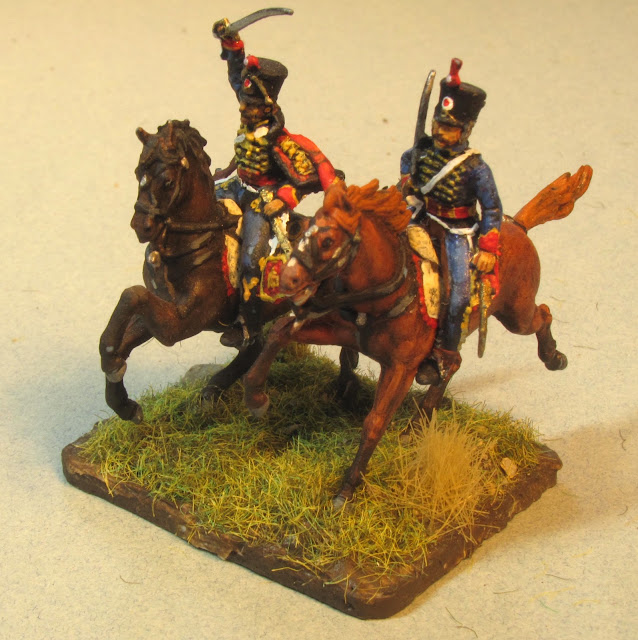The 4th Hussars are my most recent addition to my French cavalry. Once again, these are the very beautifully sculpted Italeri figures and were finished in time to show up at our refight of the Battle of Alcaniz earlier this year and again at Maria, both times as part of Suchet's army in the east of Spain. They will join the 3rd Hussards previously painted, which can be seen here. Without a doubt, I think these figures are the most gratifying to paint of all my Napoleonic forces.
A bit of history
The 4th Hussards began life as the Hussards Colonel Général on July 31, 1783, formed from one squadron each of four existing regiments,(Bercheny, Chamborant, Conflans and Esterhazy). In 1788 it was further enlarged by drafts from other regiments and saw much action in the Wars of both the 1st and 2nd Coalitions. It was renamed the 5th Hussards (fifth in seniority) in 1791 during the reorganization of the French army and was moved up to 4th in 1793.
 |
| Vive l'Empereur! by Édouard Detaille, 1891 |
The 4th also saw action throughout the Napoleonic Wars (1803-1815), first in Austria, Prussia and Poland and then in Spain from 1809-1813, primarily filling the usual light cavalry role of scouting, escorting and skirmishing but also being employed at times on the battlefield.
They returned to France and the field for both Ligny and Waterloo in the 100 Days War.










































